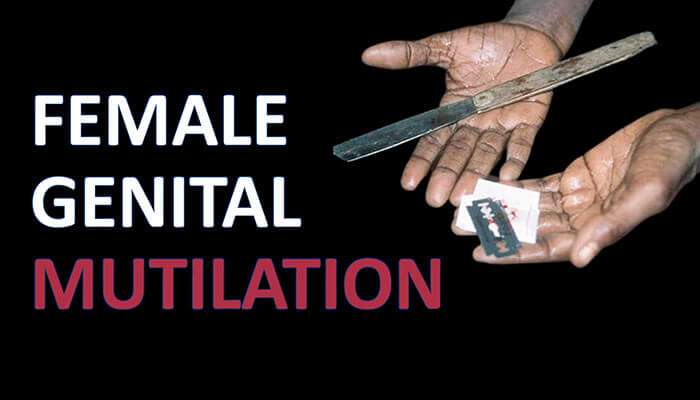GENITAL MUTILATION
Female genital mutilation (FGM) is a procedure that involves the partial or total removal of the external female genitalia for non-medical reasons. Each year more than 3 million African girls are forced to undergo one of several forms of genital mutilation, still practiced in more than 30 countries worldwide. The U.N. says about 4.2 million girls are at risk of female genital mutilation. The U.N. stresses the importance of implementing urgent investment and concrete action. Only through cooperation can one of the goals of Agenda 2030, namely the elimination of female genital mutilation, be implemented
ORIGIN
As early as the texts of the Greek historian Herodotus, dated to the mid-5th century B.C., spoke of the custom he observed during a trip to ancient Egyptian lands of circumcising girls. Information is also confirmed by archaeologists in Egypt, who identified features traceable to mutilation on the remains of mummies dating as far back as 400 BCE. Whether the practice originated in the time of the Pharaohs or in even earlier times is unclear. However, the approach was later adopted in different parts of Africa and other regions worldwide. For a short time, it also spread to the West, where around the 1960s, it was medically practiced to treat disorders such as female hysteria.
HOW IT HAPPENS.
According to WHO, the term female genital mutilation is defined as all procedures that involve the partial or total removal of the external female genitalia for non-medical reasons. Female Genital Mutilation (FGM ) is generally divided into four categories depending on the severity of the operation. It ranges from partial or total removal of the clitoris to narrowing the vaginal orifice with a practice better known as female infibulation. Also, Female genital mutilation is usually performed by women in the community who have been given this task. This is done under poor sanitary conditions, without anesthetics, antibiotics, or sterile material.
CONSEQUENCES
According to World Health Organization (WHO), women who undergo any form of mutilation face both short- and long-term consequences. First is the acute pain caused by tearing flesh without anesthesia. Secondly, blood loss during the operation causes severe shock and bleeding, possibly leading to the girl’s death. In addition, using the same unsterilized instruments causes infections and promotes the spread of HIV. In the long run, infection of the genital region, and urinary tract, menstrual problems, pain during sexual intercourse, and stones. Other consequences can develop, which can go as far as causing real and permanent physical disability.
REASONS
- Socio-cultural: in some countries, female genital mutilation is performed as a rite of passage to mark the transition of adolescent girls to adulthood and their readiness to marry.
- Psychological and sexual: in populations where virginity is considered a prerequisite for marriage, genital mutilation is practiced to keep a woman’s celibacy intact.
- Religious and spiritual: in some communities, genital removal is linked to tribal anthropological cultures. This is practiced because it would make women spiritually pure.
- Hygienic: in some cultures, unmutilated women are considered unclean; therefore, they cannot handle food and water.
- Gender factors: often, female genital mutilation consider necessary for a girl to be regarded as a complete woman
SOLUTIONS
Firstly, It is necessary to give voice to the 200 million women who are victims of female genital mutilation. They are unaware and are forced to undergo a clear violation of the most fundamental human rights. This is the bloodiest form of violence against women. Secondly, we want to spread the message that they are inhumane. Harmful practices that are unnecessary and seriously endanger women’s lives and health. We are committed to creating information to educate men, women, fathers, and mothers. To make them understand the multiple risks they expose their girls to when they decide to have them circumcised. To make them understand the irreparable harm they inflict on them.







